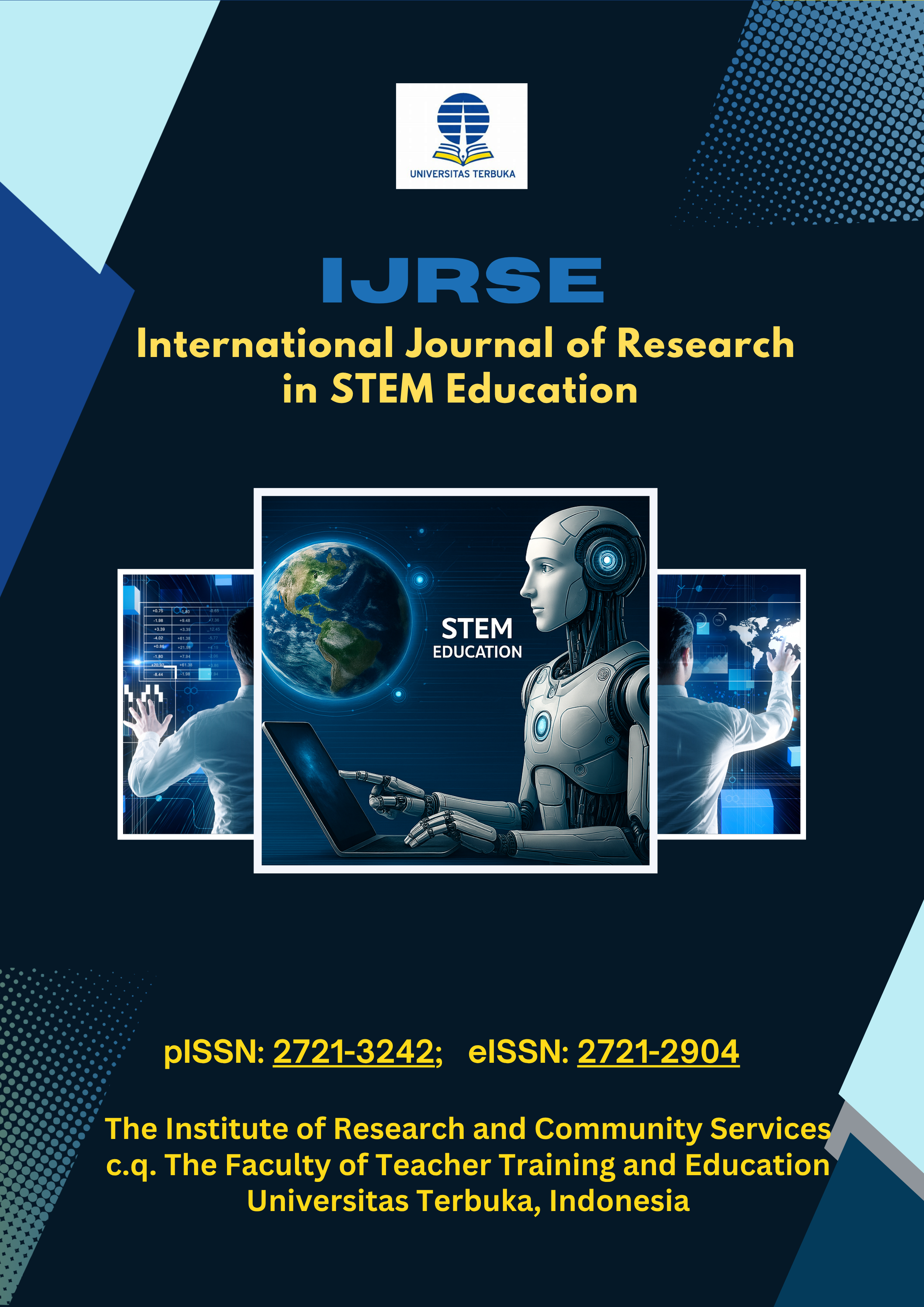The Comparison of Students' Perceived Levels of Self-Efficacy in Live, Online and Live Online Courses
DOI:
https://doi.org/10.33830/ijrse.v3i1.505Abstract
Education during COVID-19 pandemic has been greatly disrupted. While live courses where students meet face-to-face in classrooms are physically limited, online courses become more popular where students learn from pre-recorded videos at their own pace. In contrast, live online courses are learning modes where students and teachers meet via webinar tools such as zoom, skype, google meet, webex, teams, to name a few. This study compared students' perceived levels of self-efficacy in these three different settings. Self-efficacy is defined as belief in one'own ability to accomplish a task, which can be influenced by mastery experiences, verbal persuasion, vicarious experiences, and physiological states. An online questionnaire with 12 closed-ended statements based on a 5-Likert scale was developed, representing the four factors in the three modes of learning. A total of 105 voluntary responses were received. Statistical differences in the mean scores were determined by a paired sample t-test. The results at the significance level of 95% showed that the mean score of mastery experiences was the greatest in live courses (4.5), followed by live online (4.4) and online courses (3.3). The same was observed in vicarious experiences where live courses gained the greatest mean (4.5), followed by live online (4.3) and online courses (1.7). The means of verbal persuasion between live (4.5) and live online courses (4.3) did not differ significantly, but the lowest was in online courses (1.6). Interestingly, the reverse trend was found in psychological states in which the greatest was found in online (4.7), followed by live online (4.5) and live courses (3.6). The analysis above was based upon students who had no technical difficulties to access live online courses. However, this may not be applicable to contexts where internet connect is problematic. For educational implications, the findings revealed that live online courses are proven to be the most appropriate mode of learning during the pandemic. In contrast, online courses are associated with lower levels of mastery experiences, vicarious experiences, and verbal persuasion perceived by learners; whereas live courses lowered psychological states.
Downloads
Published
How to Cite
Issue
Section
License
Copyright (c) 2021 Tarosh Wangwongwiroj, Pratchayapong Yasri

This work is licensed under a Creative Commons Attribution-NonCommercial 4.0 International License.
Content Licensing, Copyright, and Permissions
1. License
International Journal of Research in STEM Education (IJRSE) adopts the Creative Commons Attribution-NonCommercial 4.0 International License (CC BY-NC 4.0) as the optimal license for the publication, distribution, use, and reuse of scholarly works for non-commercial purposes.
The non-commercial use of the article will be governed by this license, which allows others to share and adapt the work provided proper attribution is given to the author(s) and the journal.
Creative Commons Attribution-NonCommercial 4.0 International License.
Creative Commons License: CC BY-NC 4.0
2. Author's Warranties
The author warrants that the article is original, written by the stated author(s), has not been published before, contains no unlawful statements, does not infringe the rights of others, is subject to copyright vested exclusively in the author, is free of any third-party rights, and that all necessary written permissions to quote from other sources have been obtained by the author(s).
3. User Rights
The International Journal of Research in STEM Education aims to disseminate published articles as freely as possible. Under the Creative Commons license, users are permitted to copy, distribute, display, and perform the work for non-commercial purposes only, provided that proper attribution is given to the author(s) and this journal.
4. Rights of Authors
Authors retain the following rights:
- Copyright and proprietary rights related to the article, such as patent rights.
- The right to use the substance of the article in future works (e.g., lectures, books).
- The right to reproduce the article for personal purposes.
- The right to self-archive the article.
- The right to enter into separate, additional non-exclusive contractual arrangements for the distribution of the article’s published version (e.g., posting to an institutional repository or publishing it in a book), with acknowledgment of its initial publication in IJRSE.
If the author has a non-exclusive publishing contract with another publisher under a more restrictive license, the author still retains all rights to republish or distribute the work elsewhere, including commercially, as the author is not bound by the license conditions imposed on the journal.
5. Co-Authorship
If the article has multiple authors, the signatory of this agreement warrants that he/she has been authorized by all co-authors to sign this agreement on their behalf and agrees to inform all co-authors of the terms of this agreement.
6. Termination
This agreement may be terminated by either the author or IJRSE with two months’ notice if the other party has materially breached this agreement and failed to remedy such breach within one month after receiving written notice.
No breach or violation of this agreement will cause automatic termination or affect the license granted to IJRSE.
7. Royalties
This agreement entitles the author to no royalties or other fees. To the extent legally permissible, the author waives the right to collect royalties in respect of any use of the article by IJRSE or its sublicensees.
8. Miscellaneous
IJRSE will publish the article (or have it published) once the editorial process has been successfully completed.
The journal reserves the right to edit the article for style, punctuation, spelling, capitalization, referencing, and consistency as deemed appropriate.
The author acknowledges that the article will be made publicly accessible, and such access will be free of charge for readers.








